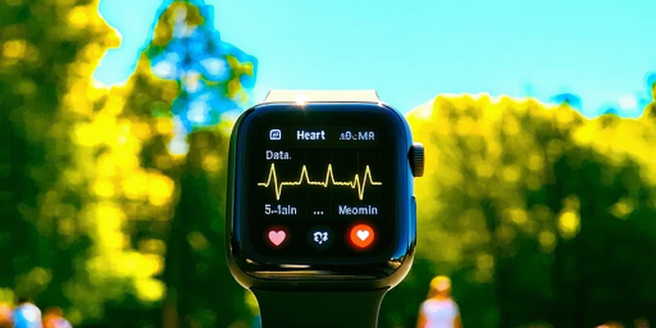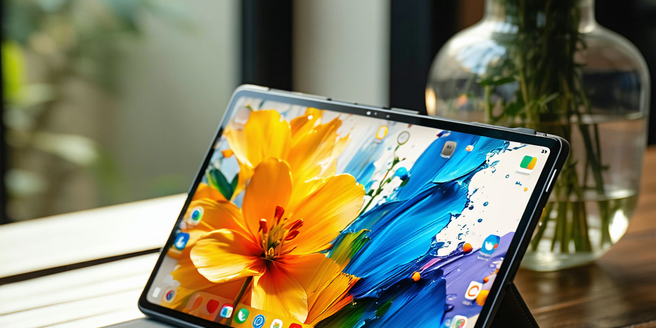
White Noise Machines For Better Concentration
Explore the benefits of white noise, a consistent sound that masks background noise to improve concentration and relaxation. It enhances sleep quality and cognitive function, making it useful in both professional settings and home offices. White noise machines emit sound waves to create a uniform auditory backdrop, often simulating natural sounds. When choosing a machine, consider features like sound variety, portability, and user-friendly controls. Models such as the LectroFan, Marpac Dohm Classic, and Hatch Restore offer distinct advantages. Maximize concentration by strategically placing the machine, experimenting with sounds, and incorporating it into your routine to create a structured environment for improved focus.

5g Integration Strategies
5G technology is set to bring transformative changes across various sectors with its faster speeds and reliable connections, impacting healthcare, manufacturing, and entertainment. It enables innovative applications like IoT, autonomous vehicles, and improved media experiences, supports smarter cities, and enhances broadband access in remote areas. However, the transition to 5G faces challenges such as infrastructure overhauls, regulatory issues, and cybersecurity concerns. Selecting appropriate 5G infrastructure is crucial, involving decisions on spectrum availability and new technology integrations. A seamless transition requires backward compatibility and careful planning, while optimizing security and privacy is essential to protect sensitive data. Future trends include the development of private 5G networks tailored to specific industry needs.

Electric Bicycles For Recreation
Electric bicycles blend traditional biking with modern technology, making cycling accessible to a wider audience by reducing fatigue and expanding travel distances. They contribute to an active lifestyle, reduce traffic congestion, and offer an environmentally friendly alternative to cars, aligning with sustainability goals. Key features to look for in recreational e-bikes include motor power, battery capacity, adjustable pedal assist, suspension quality, frame design, and integrated safety features. E-biking offers health benefits such as improved cardiovascular health and mood, while being easy on the joints. Environmentally, e-bikes produce zero emissions, supporting eco-friendly transportation initiatives. Popular e-bike trails provide stunning natural and historical views, catering to outdoor enthusiasts. Regular maintenance, such as checking batteries, tires, brakes, gears, and storage, ensures your e-bike remains reliable. When selecting an e-bike, consider factors like intended use, terrain, and frequency of rides to choose a model that meets your needs.

Noise Machines For Concentration
Noise machines produce consistent sounds that mask disruptive noises, creating a tranquil environment for better focus and relaxation. They improve cognitive performance by maintaining a steady auditory setting and can be adjusted for personal sound preferences. Different types of noise machines—like white, pink, and brown noise machines—offer unique benefits; white noise masks other noises with static sounds, pink noise mimics natural environments, and brown noise provides deeper tones. Choosing the right noise machine involves considering sound preferences, usability, and environmental factors. Effective use includes setting comfortable volumes, experimenting with sound patterns, and using headphones if necessary. While noise machines enhance focus, users should be aware of potential downsides like over-reliance and sleep disruptions, which can be mitigated by moderating usage or altering sound settings. Experts advise choosing the right noise type and integrating noise machine use into daily routines for optimal concentration benefits.

Wearable Gadgets At Work
Wearable technology is transforming workplaces by enhancing efficiency, wellness, and safety. Initially used for personal health tracking, devices like smartwatches and augmented reality headsets are now integral to professional environments. They streamline communication, provide real-time data, and foster healthy habits, improving productivity and job satisfaction. However, challenges such as data security, integration with existing systems, and employee concerns need careful management. Future trends suggest a deeper integration with IoT and AI, promising more connected and personalized workplace experiences. Embracing these innovations can create a dynamic, efficient, and healthier workplace.

Team Building Activities
Team building is vital for enhancing workplace dynamics and boosting morale by improving communication and collaboration among employees. It increases productivity and encourages innovation while fostering a sense of belonging and commitment to organizational goals. Effective team-building activities, whether indoor, outdoor, or virtual, promote a healthy work culture, reducing stress and conflict and identifying team members' strengths and weaknesses. Indoor activities like escape rooms or workshops enhance shared learning experiences and strategic thinking, while outdoor adventures, including hiking and rock climbing, build trust and resilience. Virtual activities keep remote teams engaged and connected. A step-by-step planning guide ensures success by defining objectives, setting budgets, and choosing inclusive activities. Measuring the success of these activities through feedback is crucial in understanding their impact and shaping future initiatives to enhance team cohesion and workplace culture.

Customizable Mechanical Keyboards For Personalization
Mechanical keyboards are renowned for their tactile feedback, durability, and customization options. Unlike membrane keyboards, they use individual switches for each key, offering unique typing experiences. Enthusiasts enjoy personalizing their keyboards by altering switches, keycaps, and other components. Customizable keyboards benefit typists by reducing finger fatigue and improving typing speed and gamers by offering responsive inputs for precise actions. Choosing the right switches, whether clicky, tactile, or linear, is crucial for optimal performance. Aesthetic modifications, such as keycap swaps and custom lighting, allow users to express individuality, turning keyboards into personalized tools that enhance both comfort and performance.

Wearable Health Devices
Wearable health devices have significantly advanced from basic step counters to sophisticated health monitoring tools, driven by sensor technology, miniaturization, and data analytics. Modern wearables now feature heart rate monitors, GPS tracking, sleep analysis, and sensors for tracking various health metrics like blood oxygen levels and stress. The integration of AI provides personalized health insights, while connectivity features enhance data transfer. Wearables promote proactive health management by providing real-time data, encouraging healthier habits, and enabling early detection of health issues. However, challenges include data accuracy, battery life, privacy concerns, cost, and device interoperability. Future advancements in nanotechnology, biosensing, and telehealth integration promise further enhancements, potentially revolutionizing preventive healthcare and creating personalized health ecosystems.

Energy Monitoring Systems
Energy monitoring systems are essential for efficient energy management, offering real-time data that allow users to track and analyze their energy consumption through sensors, software, and dashboards. These systems help identify inefficiencies and potential savings, benefiting both residential and commercial users in optimizing energy use and contributing to sustainability efforts. Key advantages include insights into consumption patterns, cost savings, real-time alerts for corrective actions, and support for sustainability goals by reducing carbon footprints. Businesses can enhance their brand image by adopting these systems, showcasing environmental responsibility. Energy monitoring systems work in steps, from installing sensors to converting raw data into accessible insights via web platforms or mobile apps. Selecting the right system depends on budget, energy goals, and required features, with home and commercial systems catering to different needs. Future trends include AI integration, IoT use, and adapting for renewable energy, all contributing to global sustainability objectives and offering users greater control over their energy consumption.

Comparing Flagship Android Tablets
Flagship Android tablets stand out with their superior design, incorporating premium materials like aluminum for durability and aesthetics. These devices offer minimal bezels and ergonomic features for prolonged comfort. High-resolution displays with AMOLED or OLED technology deliver vibrant visuals and adjust refresh rates for efficient power use. Performance is robust with the latest processors and substantial RAM, supporting multitasking and graphically intensive applications. Battery life is impressive, featuring fast and wireless charging options. User interfaces are user-friendly, often with custom Android skins for enhanced multitasking and compatibility with accessories. Advanced camera systems allow high-quality photography and video, appealing to content creators. Overall, these tablets provide a blend of beauty, power, and functionality, making them ideal for both professional and personal use.

Automation In Customer Service
Automation has revolutionized modern customer service by streamlining routine tasks, allowing businesses to focus on delivering exceptional customer experiences. It enhances efficiency and speed, ensuring quicker response times and higher satisfaction rates while managing large volumes of data for informed decision-making. Automation also enables personalized interactions by sorting through customer preferences and histories. The implementation of AI-driven chatbots and virtual assistants ensures 24/7 accessibility, overcoming the limitations of traditional support systems. This results in consistent service offerings and frees human resources for more complex issues. Adopting automated solutions leads to cost-efficiency, operational efficiency, and improved customer satisfaction. Despite challenges like integration issues and maintaining the human touch, strategic solutions and investment in technology can overcome these hurdles. Key technologies such as AI, machine learning, and NLP drive forward advancements like personalized service, predictive analytics, and improved customer engagement. The future holds promising advancements in intuitive interaction systems, predictive analysis, and security enhancements through blockchain integration, further transforming the customer service landscape.

Comparison Of Top Android Tablets
Leading Android tablets offer a blend of high-resolution displays, powerful processors, and versatile connectivity options such as Wi-Fi 6 and 5G. They feature expandable storage, high-quality cameras, and stylus support, catering to productivity and creative tasks. Performance is enhanced by advanced processors and ample RAM, optimized for multitasking and gaming. These tablets boast AMOLED or high-resolution LCD displays, with high refresh rates and advanced audio for an exceptional user experience. Long-lasting battery life, fast charging, and features like wireless charging provide convenience and efficiency. Priced competitively, both high-end and mid-range models deliver strong value for money, often including useful accessories and regular software updates for longevity and adaptability.